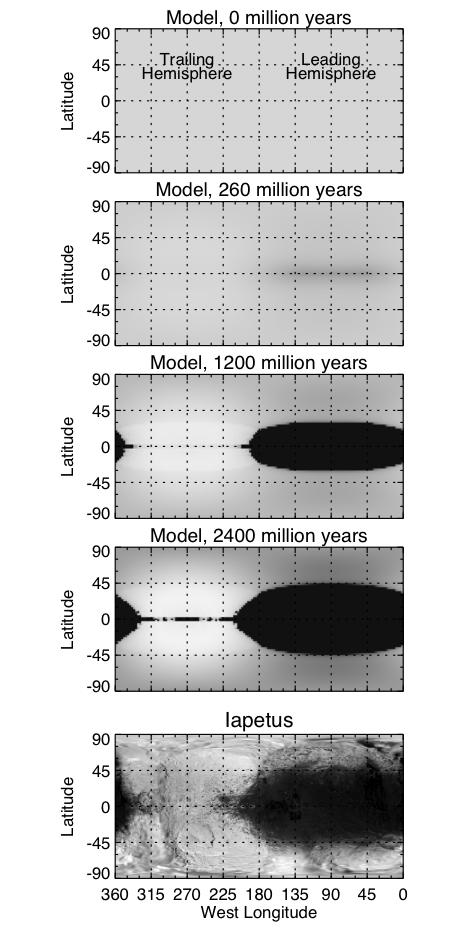Thermal Runaway Model

| Language |
|
|---|
This series of maps of Saturn's moon Iapetus shows how a computer model of migrating ice can explain most features of Iapetus' global appearance. The model starts with Iapetus uniformly covered in ice with some dark material mixed in, as shown in the top map. Additional dark material is then slowly added to the leading hemisphere (centered at 90 degrees west longitude). 260 million years later, the leading side has darkened and thus warmed slightly, and ice has begun to evaporate near the equator where temperatures are highest. The ice evaporation leaves dark material behind and thus darkens the surface further.
After 1,200 million years, a large dark region that is completely ice-free has developed on the leading side. By 2,400 million years the dark region has grown to closely resemble the size and shape of the dark region on the global mosaic map of Cassini images of the real Iapetus, shown in the bottom panel.
The Cassini mission is a cooperative project of NASA, the European Space Agency and the Italian Space Agency. The Jet Propulsion Laboratory, a division of the California Institute of Technology in Pasadena, manages the mission for NASA's Science Mission Directorate, Washington, D.C. The Cassini orbiter and its two onboard cameras were designed, developed and assembled at JPL. The imaging operations center is based at the Space Science Institute in Boulder, Colo.
For more information about the Cassini-Huygens mission visit http://saturn.jpl.nasa.gov or http://www.nasa.gov/cassini . The Cassini imaging team homepage is at http://ciclops.org .
Credit: Southwest Research Institute/NASA/JPL/Steve Albers, NOAA
